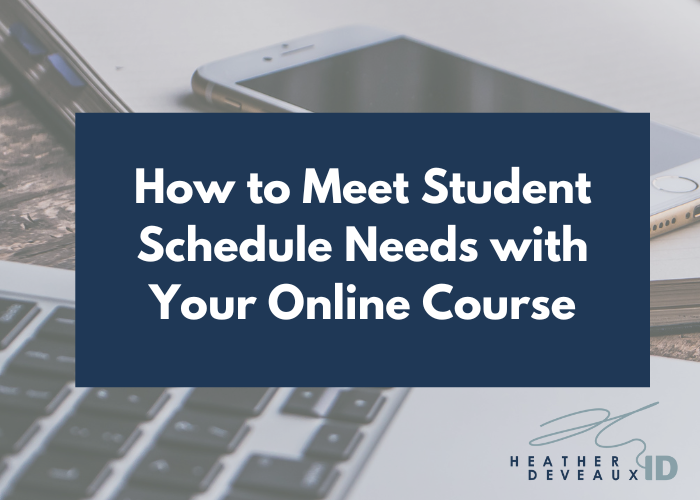What’s the Best Approach to Creating an Online Course?
What’s the best approach to creating an online course? There are a million possible answers to that question, depending on who you ask, of course. But if you ask me, the answer is simple: the faster you can build it, the faster you can get feedback about it.
In this article, we’re talking about the best approach to creating an online course in terms of time. Does it take a year or a week? And does it matter?
Thinking Fast and Slow: Best Approach to Creating an Online Course
I’ve made a name for myself as a course creator who can develop and deliver learning content in record time. I create courses in days, not months. It’s easy for people to assume the courses I create are not as valuable as the ones that take months or even an entire year to develop, but it’s simply not true. I think about creating online courses like baking a cake. Sometimes the recipe calls for a 350 degree oven for 45 minutes and sometimes it calls for a 425 degree oven for 90 minutes. Both recipes yield a cake. But the recipes are different. My recipe doesn’t require a lot of filler. I cut straight to the point of learning and know how to filter for noise.
This approach, coupled with my 4-step system to creating online courses, means that I can slide ingredients (content) in and out of the framework, and in the end, get the same quality cake as someone who has to start from scratch every single time.
But I’ve been creating courses since 2000. I’ve been creating learning content for online use since 2008. I’ve done this a time or two. When you’re just starting out, and you’ve never created a course before, you’ll feel tempted to spend months and months gathering research, writing, reading, and second-guessing yourself. I know this because my clients tell me they’ve done this. Until they hit a wall and decide to hire me instead. We just don’t know what we don’t know and for some people, it’s not worth it to have to learn these new skills.
I can take 6 months to build your course if you makes you feel better, but it’s not necessary. Proven frameworks, tested systems, and knowledge about how to navigate learning means results happen fast. For you.

When is Enough, Enough?
A common question from clients is how long should the course be? It should be as long as it needs to be to get the point across and ensure the student walks away able to do the thing. Which means there is no straight answer. There is no one-size-fits-all. And that throws people for a loop. Have you ever wondered why university courses are 90 minutes a week for 3 months at a time? Or why a first aid course is 10 hours over two days? What about a driver training program? How about that photography class you took at the local college? And what about that coaching program that lasts 12 weeks but you only meet for one hour a week? Except for regulatory bodies that stipulate how much learning material or hours need to be covered, the rest is poorly chosen in arbitrary ways. A 12 week coaching program? It sounds substantial and is easier to sell than 12 individual sessions. It doesn’t mean that there is 12 hours of content, or that you’ll learn 12 hours of new material.
When I work with clients to create courses, we follow the lead of the results we’re trying to achieve. This means that a client may end up with a course that’s 3 hours or it may be 18 hours. If we’re trying to teach people how to swap out an engine in a car we need more time than if we’re going to teach someone a new dance move. Sounds simple, but it should be simple. Whatever is in your brain doesn’t need to be in the brain of your student. And when you try to recreate yourself all over the place by teaching people everything you know, you inadvertently end up taking on a never-ending project. And that’s no fun.
Best Approach to Creating an Online Course for Beginners
I always like to give some advice about how to get started. Not everyone who happens upon my blog needs to hire me and not every project is the right fit for my skills. So here are three things you can do right now to help you find more success as you think about creating an online course.
- focus on the result: what steps do you need to teach someone and how long does each step take to learn?
- what collateral do you need to teach those steps? Don’t say video. It’s probably not video. When I work with clients to create online courses, we only employ video when we need to demonstrate something or walk people through a process. Most information doesn’t need to be in video form, despite what Instagram tells us. This isn’t social media. We’re talking about learning here.
- how much runway do you need to be able to produce those materials? Think about how long you need to convey those messages: will it take you an hour or ten hours to write a blurb for someone to read? Will it take you 45 minutes or 4 weeks to record an audio file?
Don’t Overshare
It’s easy to get caught up in the momentum of creating more content. Especially when you’re feeling insecure about what you’ve already created. There’s a natural tendency amongst first-time course creators to give lots of bonus material, extra videos, worksheets, worksheets and more worksheets! But don’t. Just don’t. Students are more apt to enjoy a course that does what you said it would do and it doesn’t need to do anything else.
Deliver on the results you promised. And if you need help figuring that out, feel free to book a call with me now. I’m always happy to chat with people about creating online courses.







